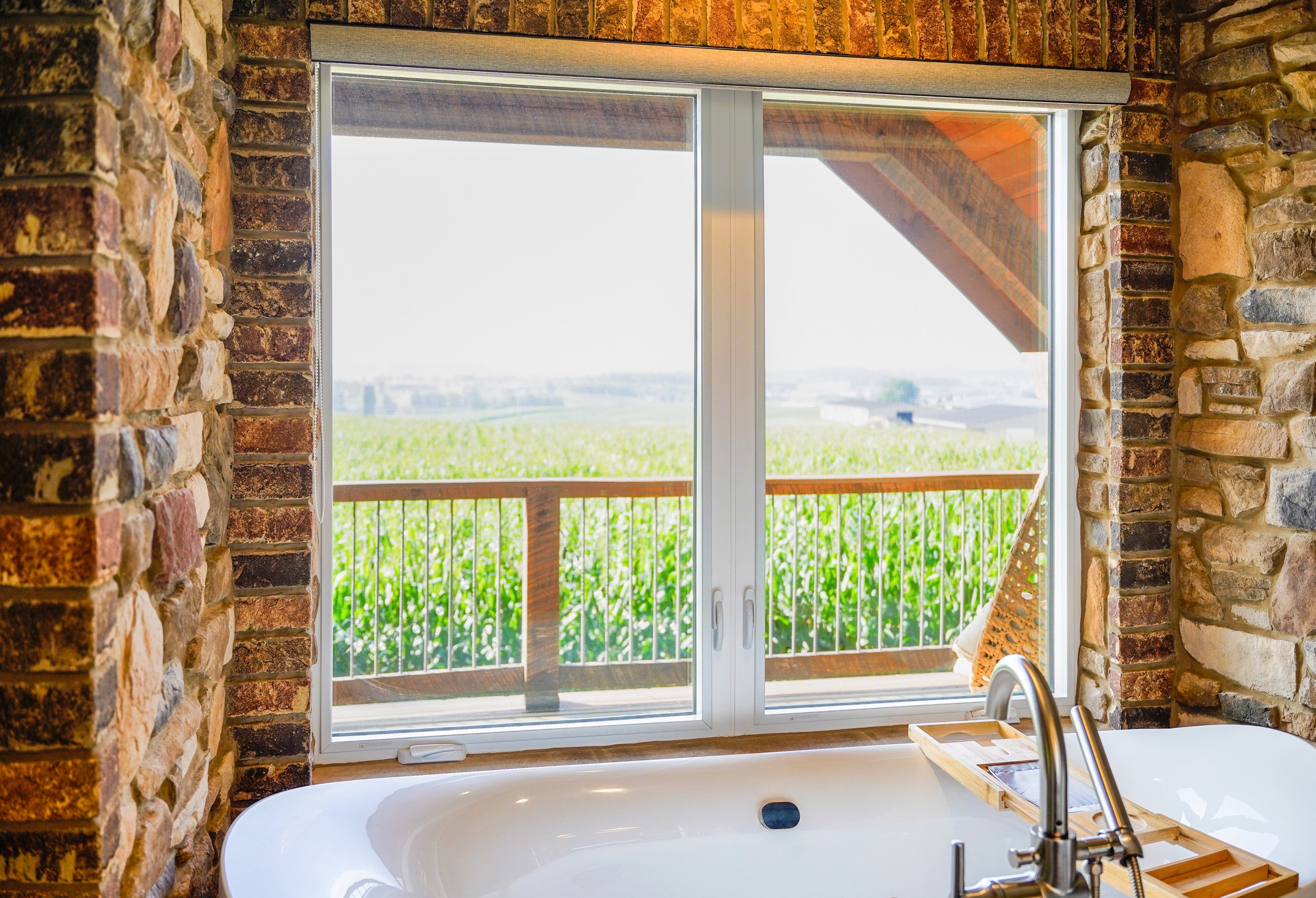Casement Windows: Enhancing Ventilation and Style in Your Home
If you’re looking to spruce up your home or replace some old windows, you might want to consider casement windows. Casement windows stand out for their unique combination of functionality, aesthetics, and energy efficiency.
In this comprehensive homeowner’s guide, we'll answer questions like what are casement windows and explain the different types of casement windows available, their pros and cons, and why WindowLab's casement windows are an excellent choice for your Midwestern home.
What Is A Casement Window?
You might define casement windows like this: a window that opens like a door, swinging outward with just a simple turn of a crank handle. They’re hinged on one side and open outward, kind of like how you’d open your screen door to let in that fresh summer breeze.
Casement windows are great for letting in loads of fresh air and giving you clear, unobstructed views. They’re perfect for those spots in your home where you want to maximize airflow, like your kitchen, living room, or bathroom. And they look sharp in just about any style of home, from your classic craftsman to your mid-century modern, thanks to their clean lines and versatile appearance.
Types of Casement Windows
Now, you've got a few different flavors of casement windows to choose from, depending on what you're looking for:
Single Casement on either side of the door.
1. Single Casement Windows
These are your basic, no-fuss option. They're great for smaller spaces where you want some good airflow and a nice view. Think about that spot above your kitchen sink — a single casement window would be perfect there!
Double Casement
2. Double Casement Windows
If you've got a bigger opening to fill, double casement windows might be your best bet. They've got two windows that open from the center, giving you a nice, symmetrical look and even more airflow. These are great for living rooms, dining rooms, or bedrooms where you want to really open things up.
Triple Casement
3. Triple Casement Windows
Got an even wider space to fill? Triple casement windows are the way to go. They give you a panoramic view and maximum ventilation. Imagine sitting in your living room and having an expansive view of your backyard — that's what triple casement windows can do for you.
Pros and Cons of Casement Windows
Like any home improvement choice, casement windows have their advantages and disadvantages. Let’s break it down:
Pros:
Energy Efficient: They seal up tight when closed, preventing air leakage and keeping your heating and cooling bills in check.
Better Ventilation: Their open design allows you to catch those nice summer breezes from different angles and direct airflow into your home.
Unobstructed Views: There’s no bars, grids, or central mullions to get in the way of your views.
Easy to Use: The crank mechanism makes them easy to open and close, even in hard-to-reach places like over countertops or in a stairwell.
Cons:
Need Exterior Space: Casement windows require space to open outward, so they’re not ideal if you’ve got limited exterior space. A different window might be more suitable if bushes or furniture are right outside, for example.
Trickier To Clean From The Outside: Cleaning the exterior of casement windows can be challenging, especially on higher floors.
Screens Go On The Inside: Screens must be placed on the inside with these windows, which some folks aren’t too keen on because it might interfere with the aesthetic of your interior decor.
Won’t Work With AC Units: The design doesn’t allow for window-mounted air conditioning units so keep that in mind if you rely on those during the summer months.
Why Choose Casement Windows From WindowLab
Now, if all this talk about casement windows has got you thinking they might just be the window for your home, we’re here to tell you not all casement windows are created equal. Here's why WindowLab's casement windows stand out:
Triple Pane Glass: First off, we use triple pane rather than double pane glass in our windows. That's like having three layers of protection between you and the outside world. Now you might be thinking that’s great, but won’t they cost more? Actually no! Our triple pane windows are the same price as many of our competitors' double pane windows. It’ll keep your home cooler in the summer, warmer in the winter, and quieter all year round. Plus, it'll help keep those energy bills down — and who doesn't love saving a few bucks?
Customizable Options: We know every home is unique, which is why we offer a whole range of customization options. Want your hardware to match your doorknobs? No problem. Looking for a specific color to complement your home's exterior? We've got you covered with a variety of laminate, vinyl, and exterior paint finishes.
Energy Efficient: When it comes to energy efficiency, our casement windows don't mess around. They're certified by the National Fenestration Rating Council (NFRC) and recognized as Energy Star Most Efficient. That means they meet the highest standards for energy performance — good for your wallet and good for the environment.
Double Lifetime Warranty: And here's the kicker — we offer a double lifetime warranty on our casement windows, meaning it covers both materials and workmanship. That's how confident we are in the quality of our products. We stand behind our windows, so you can have peace of mind knowing your investment is protected.
Ongoing Customer Support: Our support doesn’t stop when we’re done installing. We’re always ready to answer any questions or concerns about maintenance, operation, or performance throughout the life of your windows.
Ready to enhance your home's ventilation and style with casement windows? Learn more about our selection of casement windows, or contact us today to get started. We're here to help you find the perfect windows for your home, neighbor!




